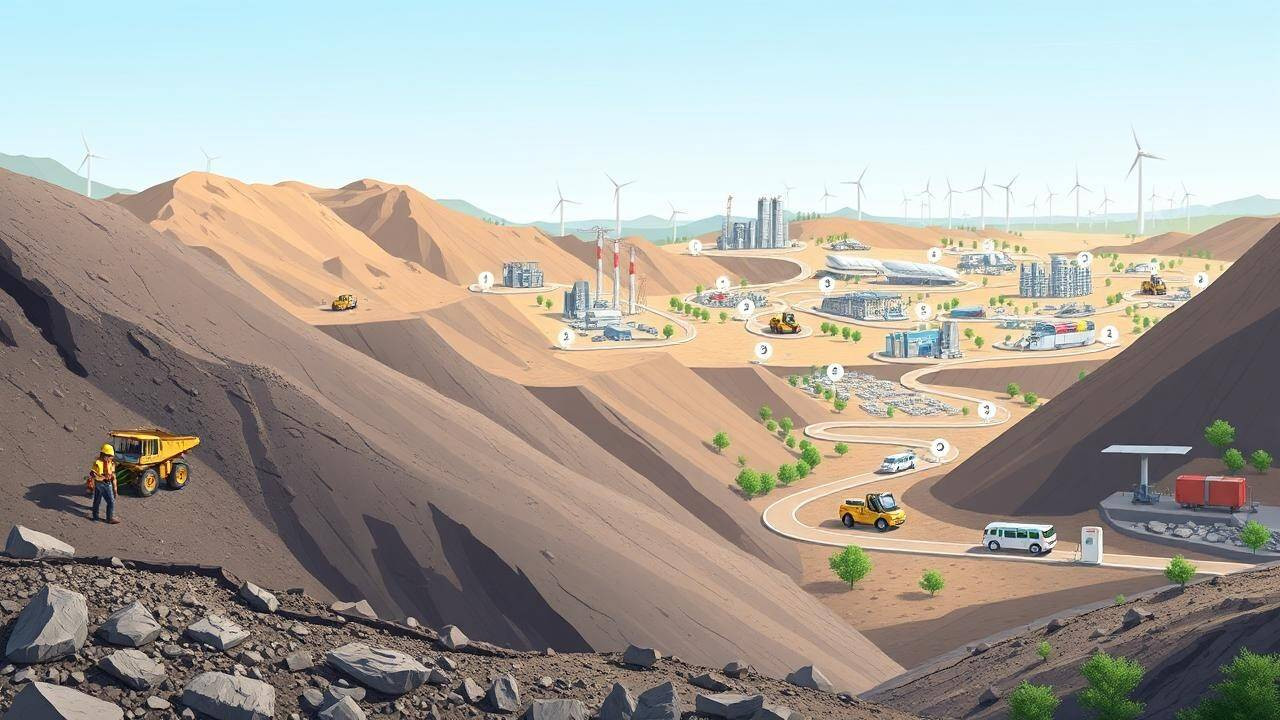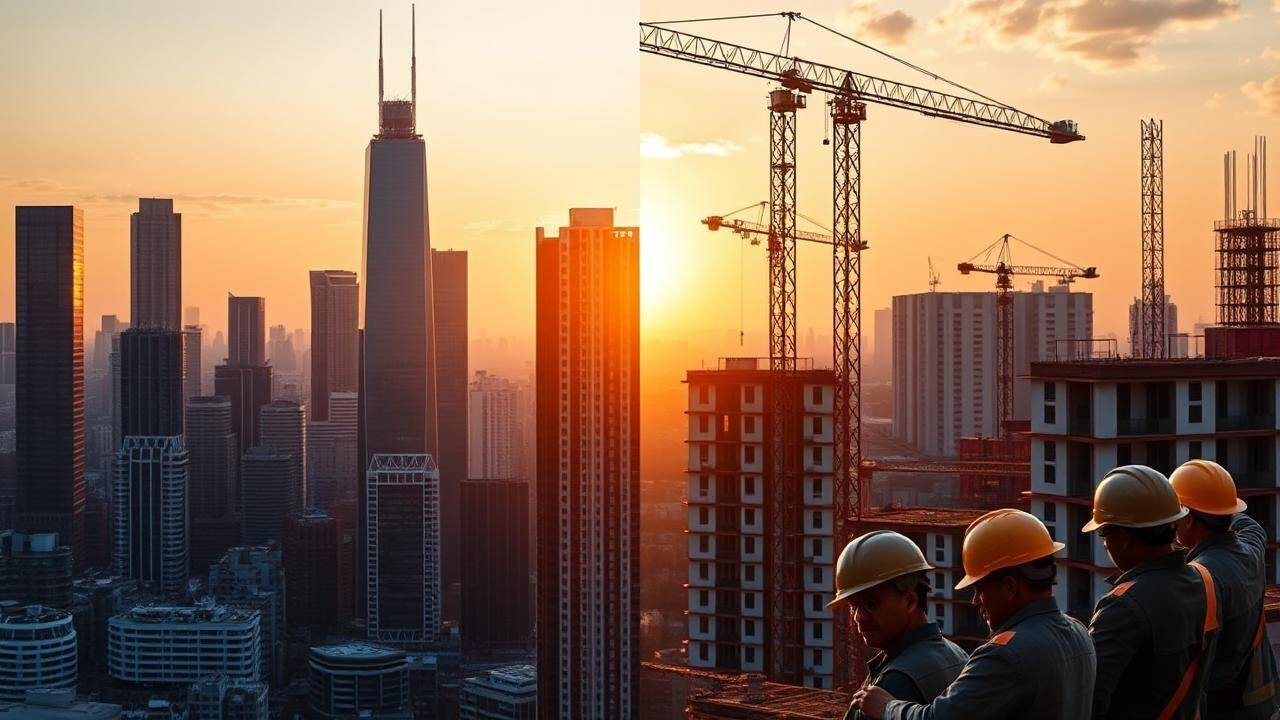India is intensifying efforts to secure its rare earth supply chain, crucial for clean energy and electric vehicle growth, aiming for self-reliance in rare earth magnets under the Viksit Bharat vision.
India’s Bold Gambit: Charting a Course to Critical Mineral Independence
The race for critical minerals is heating up, and India is determined to be a frontrunner. Forget passively observing global supply chains; India is actively forging its own path toward self-reliance in rare earth elements and other vital resources. A recent report unveils a comprehensive strategy built on five robust policy pillars designed to secure India’s future in this crucial sector. This isn’t just about digging stuff out of the ground; it’s about national security, economic resilience, and technological leadership.
Why Critical Minerals Matter More Than Ever
We’re talking about the unsung heroes of modern technology. These aren’t your run-of-the-mill rocks and ores. Critical minerals are essential ingredients in everything from smartphones and electric vehicles to wind turbines and defense systems. As the world transitions to clean energy and advanced technologies, demand for these materials is skyrocketing. Relying solely on imports leaves nations vulnerable to supply disruptions, price volatility, and geopolitical maneuvering. India recognizes this and is taking decisive action to mitigate these risks.
The Five Pillars of India’s Critical Mineral Strategy
The proposed strategy isn’t a vague aspiration; it’s a concrete plan built on five key pillars, each designed to address a specific challenge and opportunity:
1. Discovery and Exploration: To find them, you have to look for them. The first pillar focuses on intensifying exploration efforts across the country. This involves leveraging advanced geological surveys, investing in research and development, and attracting private sector participation. India needs to know exactly what resources it has and where they are located. Increased exploration for critical minerals is paramount.
2. Domestic Beneficiation and Processing: Simply extracting raw materials isn’t enough. True value lies in processing and refining these materials into usable forms. This pillar emphasizes developing domestic beneficiation and processing capabilities, reducing reliance on foreign processors, and creating a robust domestic supply chain.
3. Strategic Partnerships and Acquisitions: The global landscape of critical minerals is complex and interconnected. India is actively pursuing strategic partnerships with resource-rich nations to secure access to essential minerals. This involves forging long-term supply agreements, investing in overseas mining projects, and fostering collaboration on research and technology.
4. Recycling and Circular Economy: Why mine new materials when you can recover them from existing products? This pillar promotes the development of recycling infrastructure and the adoption of circular economy principles. This reduces waste, conserves resources, and creates new economic opportunities. Think urban mining, but on a national scale.
5. Policy and Regulatory Framework: None of this can happen without a supportive policy environment. This pillar focuses on creating a clear, predictable, and investor-friendly regulatory framework that encourages domestic production, attracts foreign investment, and ensures environmental sustainability.
Implications for India’s Future
This comprehensive strategy has far-reaching implications for India’s future. By securing access to critical minerals, India can:
* Strengthen its manufacturing sector: Reliable access to these materials will fuel growth in key industries, such as electronics, automotive, and renewable energy.
* Enhance national security: Secure supply chains are essential for defense and strategic autonomy.
* Create jobs and economic opportunities: The development of a domestic critical minerals industry will generate employment and boost economic growth in related sectors.
* Become a global leader in clean energy technologies: Access to these minerals is crucial for developing and deploying clean energy solutions, such as electric vehicles and wind turbines.

Challenges Ahead
Of course, the path to self-reliance won’t be easy. India faces several challenges, including:
* Environmental concerns: Mining and processing can have significant environmental impacts. Sustainable practices and robust environmental regulations are essential.
* Technological gaps: India needs to invest in research and development to bridge technological gaps in beneficiation and processing.
* Competition from other nations: The global race for critical minerals is intensifying, and India will face stiff competition from other countries.
Despite these challenges, India’s commitment to securing its critical mineral supply chain is clear. The five-pillar strategy provides a solid foundation for achieving this goal.
Securing India’s Place in the Critical Minerals Landscape
India’s proactive approach to securing its supply of critical minerals is a strategic imperative. By focusing on exploration, domestic processing, strategic partnerships, recycling, and a supportive policy environment, India is positioning itself for success in the 21st century economy. The journey won’t be without its hurdles, but the potential rewards – economic growth, national security, and technological leadership – are well worth the effort. This decisive action not only safeguards India’s economic interests but also contributes to a more resilient and diversified global supply chain. For related insights, consider exploring India’s renewable energy goals.







